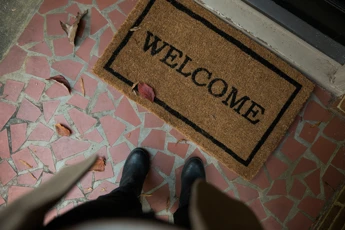For a long time, it wasn’t as vital for a potential investor to have a solid plan in place before they bought a property. Prior to the last recession, average house prices enjoyed a rapid upwards journey, and the level of rental income was not overly important because the total capital gain was good.
However, the last 15 years or so have brought a few hurdles into the market. No longer is buy-to-let something you can set and forget. Instead, what steps do you need to take to ensure you’re getting a good return on your investment?
Understanding the market
If you already own, or are considering buying an investment property, it helps to have a solid understanding of the market. This means staying up-to-date with industry news, keeping on top of buy-to-let market changes, and even signing up to forums and newsletters dedicated to landlord-specific conversations.
While staying in touch with buy-to-let regulation is non-negotiable, the sooner you learn about coming changes, the sooner you can get prepared. For example, changes to legislation surrounding buy-to-let EPC ratings are upon us. Read more about that in our article all about compulsory EPC band regulation for landlords.
Making an investment plan
The vast majority of investment properties are good at either generating income or growing in value. It’s harder to find one that does both well, so the first thing to decide is what kind of return you want and when you want or need it. That, together with the amount of capital you have available to invest and the length of time you are prepared to tie it up for, is likely to dictate the type of property and let that is most appropriate for you.
Being a landlord can be something of a legal minefield. Each local authority in England has its own take on many of the rules, and you can be fined if you are found to be in violation of the law. While in Wales you have to be accredited by certain training organisations before you can manage property, Scotland and Northern Ireland have their own rules on landlord registration too.
The easiest way to ensure you don’t fall foul of regulations is to engage a self-regulated letting agent that is ARLA, NALS or RICS-registered to handle the lettings and management of your property. Although that is an added expense, if you are not confident that you are able to keep up with the legislation yourself and ensure your property is always compliant with the latest changes, it is probably money well spent and is, of course, tax deductible.

Do your research
Once you have decided what returns you need and when, you need to look at your local market and understand what kind of property is going to deliver the returns you’re after. Speak to local estate and letting agents and carry out your own online research to build up a picture of house price and rental trends. You need to be sure that the capital you’re going to have to invest will be money well spent, particularly if refurbishment is required. Do you buy something for less that needs a bit of work, or do you buy something that’s ready to rent? Should you invest in buy-to-let for the longer term, or are there opportunities to improve and sell on?
Do you have an exit plan?
Whatever your reason for investing in property, at some point you will probably need to sell or retain as much rental income as possible to meet your financial goals. This is a plan that you’ll need to have in place when you first approach a lender.
The thing that is likely to have a significant bearing on how much money you make from selling is the amount of tax you pay. Even if your intention is to pass the property on to your family, there will be tax implications, so it’s important to consult a property tax expert and/or wealth manager as early as possible – ideally before you buy. They will be able to look at property alongside your other income and financial investments and advise how to structure your purchase and ownership. They’ll also assess the best way for you to realise the return on your invested capital, so that your tax liability is minimised.
We also recommend that you have a contingency plan in place, in case the property market or economic climate is not ideal at the time you want to sell. That might be remortgaging to release equity if you need a lump sum, or continuing to let and postponing your original plans for a while. Bear in mind that your own circumstances are likely to change over the lifetime of your property investment, and you might need to make adjustments to how you let and what you do with your profit.

Keeping track of your investment
Importantly, you need to have a system for tracking your investment and reviewing your financial plans on an annual basis. Whether you do it yourself or use your financial adviser - or even a helpful local lettings specialist - you need to keep an eye on how well your property is performing against similar properties locally and other types of financial investment. That way, you can make informed decisions about what changes you might need to make to ensure you continue to get the best possible returns.
Work with a specialist mortgage adviser
Having a clear financial plan in place and a way of tracking your property is essential if you want to avoid unpleasant surprises. While it is still possible to generate good returns on your investment property, there’s more to think about now than there was when they first became an option.
If you’re looking to buy your first investment property or want to expand your portfolio, get in touch with one of our specialist buy-to-let mortgage advisers today. An adviser will be able to offer expert advice and support in your buy-to-let journey, arming you with all the information you need to succeed.
Important information
There is no guarantee that it will be possible to arrange continuous letting of the property, nor that rental income will be sufficient to meet the cost of the mortgage.
Your property may be repossessed if you do not keep up repayments on your mortgage.
There may be a fee for mortgage advice. The actual amount you pay will depend upon your circumstances. The fee is up to 1% but a typical fee is 0.3% of the amount borrowed.




